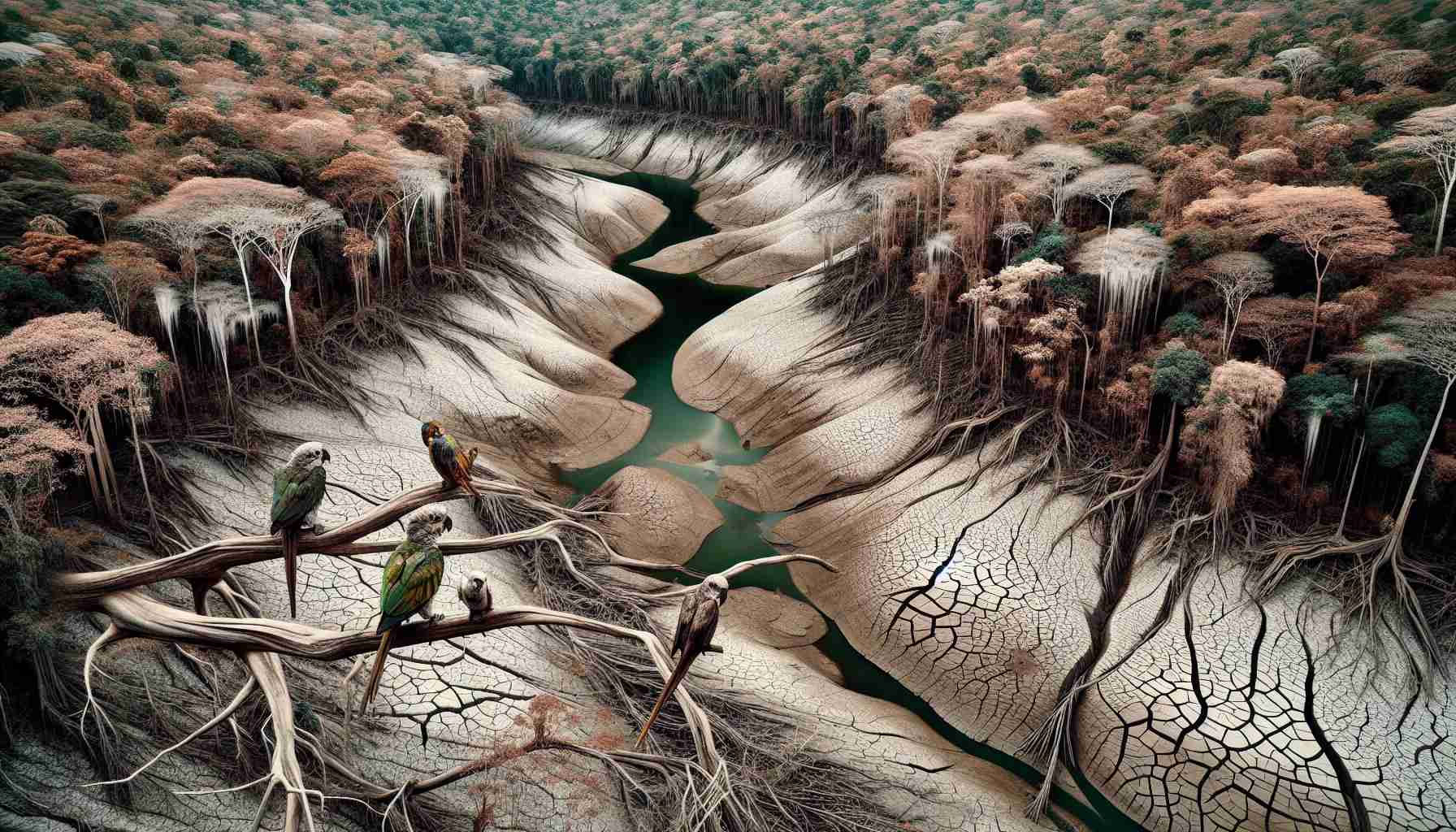A Dire Situation Unfolding
Images previously depicting the robust Amazon River and its tributaries as powerful entities now show the stark reality of completely dried-up riverbeds that were once teeming with life.
The Harrowing Impact on Wildlife and Livelihoods
Glimpses of a stranded barge ship on barren sand dunes and lifeless dolphins strewn on the ground attest to the devastation caused by the severe droughts plaguing the region. This unprecedented crisis disrupts lives, endangers wildlife, and imperils the survival of endangered species.
The Alarming Rate of Decline
The Rio Negro, a vital tributary of the Amazon, is receding at an alarming rate of 7 inches per day, heralding a water scarcity crisis that has persisted for over 140 days in certain areas. Experts fear for the livelihoods of the majority of Brazilians impacted by these drastic changes.
The Role of Environmental Factors
Attributed to a combination of the natural El Niño weather pattern and heightened ocean temperatures due to global warming, these catastrophic droughts are further propelled by deforestation efforts, pushing the region perilously close to irreversible environmental damage.
Action Plans and Hope for Restoration
Efforts to combat these challenges rest upon global initiatives to reduce emissions and extensive reforestation projects aimed at preserving the Amazon’s biodiversity and mitigating the looming threat of wildfires. Governments and corporations must act swiftly to avert further ecological deterioration, offering a glimmer of hope for the restoration of this crucial ecosystem.
Amazon Basin Drought: Unveiling Critical Insights
As the devastating drought continues to grip the Amazon Basin, there are crucial aspects to consider beyond what meets the eye. Let’s delve into some key questions that shed light on the complexities of this pressing environmental crisis.
What are the Most Pressing Concerns Beyond Wildlife and Human Livelihoods?
While the impact on wildlife and local communities is paramount, another crucial question arises: How does the drought affect the delicate balance of the ecosystem as a whole? The drying up of rivers and forests not only threatens biodiversity but also disrupts essential ecological processes, potentially leading to long-term repercussions on a global scale.
What Are the Root Causes and Complexities of the Drought?
Beyond the immediate environmental factors mentioned previously, it is essential to address the systemic issues contributing to the severity of the drought. Factors such as unsustainable land use practices, inadequate water management, and socio-economic disparities play a significant role in exacerbating the crisis. Understanding these root causes is vital for implementing effective solutions.
Advantages and Disadvantages of Response Strategies
Efforts to combat the drought and restore the Amazon Basin come with their own set of advantages and disadvantages. While reforestation projects and emission reduction initiatives offer hope for ecosystem recovery, they also pose challenges such as resource constraints, conflicting interests among stakeholders, and the need for long-term commitment and funding. Balancing these factors is essential for sustainable progress.
Key Challenges and Controversies in Restoration Efforts
One of the primary challenges in restoring the Amazon Basin is the contentious issue of land use rights and competing demands for natural resources. Conflicts may arise between conservation efforts and economic interests, highlighting the need for transparent governance and inclusive decision-making processes. Additionally, controversies surrounding indigenous land rights and traditional knowledge further complicate restoration endeavors.
In conclusion, addressing the devastating drought in the Amazon Basin requires a multifaceted approach that considers ecological, social, and economic dimensions. By examining the critical questions, understanding the complexities, and navigating the challenges associated with restoration efforts, there is hope for preserving this invaluable ecosystem for future generations.
Explore more about environmental conservation and sustainable practices at World Wildlife Fund.


















